Clancy Tucker's Blog, page 155
April 14, 2018
15 April 2018 - TOP QUOTES FROM AUTHORS

TOP QUOTES FROM AUTHORS
G'day folks,
Welcome to some more great, inspiring and humorous quotes from some famous authors.















Clancy's comment: Yep, we appear to be a mad bunch of people. So? The others just don't have the passion to tell stories.
I'm ...


Published on April 14, 2018 16:23
April 13, 2018
14 April 2018 - THE ENCHANTING GECKO
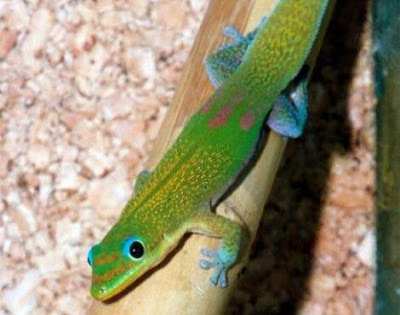
THE ENCHANTING GECKO
G'day folks,
Here is a creature that has always enchanted me, and I've seen many.
The gecko is a small to medium speciesof lizardthat is found in the more temperate and tropical regions of the world. Geckos are more commonly found around the Equator and in the Southern Hemisphere although a few speciesof gecko are found north of the Equator in warmer regions.
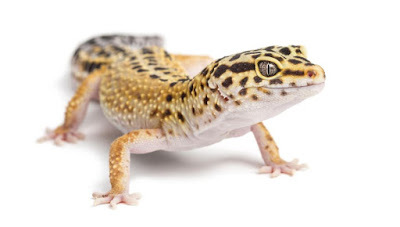
There are thought to be over 2,000 different speciesof gecko found around the world and it is widely believed that there are more speciesof gecko that ate yet to be discovered. Geckos are found in a wide variety of coloursand have various different markings on their bodies depending on the speciesof gecko.Geckos are found in a wide variety of habitatsin the warmer parts of the world including rocky deserts, mountains, jungles, rainforests, grasslandsand even in urban areas where it is common to find geckos in houses.

Geckos can range in sizefrom just a few centimetre to more than 50 cm in length. The largest speciesof gecko is the Delcourt's gecko (which is now believed to be extinct), native to New Zealand and it grows to nearly 60 cm in length. The Jaragua Sphaero found in the Dominican Republic in South America, is the smallest speciesof gecko in the world and averages less than 2cm in length.
Geckos are well known for their amazing ability to walk up vertical surfaces even those as smooth as glass. The feet of the gecko are covered in tiny hairs that stick to surfaces like sucker pads. This adaptation means that the gecko is a very agile animal.
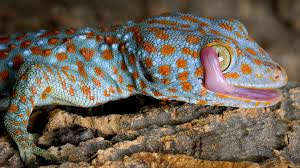
Geckos are carnivorous reptilesso the dietof the gecko is based on meat from other animals. Geckos primarily eat insectsand worms, but some of the larger speciesof gecko hunt small birds, reptilesand even small mammalssuch as mice. Some speciesof gecko are also known to eat a small amount of plant matter such as moss.

Due to their small size, geckos have a number of natural predatorsaround the world, with the snakebeing the main predatorof the gecko. Other animalsthat preyon the gecko include large spiders, birdsand some mammalspecies.
After mating, the female gecko lays 2 sticky eggs, that have a soft shell and are white in colour. The gecko eggs quickly harden so that the developing gecko inside is more protected. The eggs of the gecko can take between 1 and 3 months to hatch but the incubation period is largely dependent on the speciesof gecko and the area in which it inhabit. The female gecko is not known to nurse or look after the baby geckos after they hatch.

Today, many speciesof gecko are considered to be threatenedwith extinction due to habitatloss and pollution. Geckos are also popular pets around the world and many are caught in the wild to be sold into the exotic pet trade.
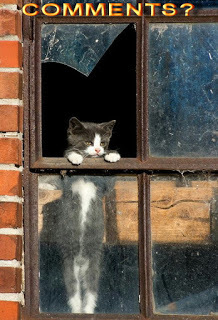 Clancy's comment: Cute, eh? Magnificent colours, and they have an amazing ability to camouflage themselves. When I lived in Thailand, I used to open the backdoor and often be frightened by a big gecko who'd pop his head out of a cupboard. But, it was better than a snake or a scorpion.
Clancy's comment: Cute, eh? Magnificent colours, and they have an amazing ability to camouflage themselves. When I lived in Thailand, I used to open the backdoor and often be frightened by a big gecko who'd pop his head out of a cupboard. But, it was better than a snake or a scorpion.I'm ...


Published on April 13, 2018 15:31
April 12, 2018
13 April 2018 - CORNY CARTOONS
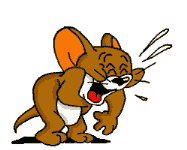
CORNY CARTOONS
G'day folks,
Time for some very corny cartoons.
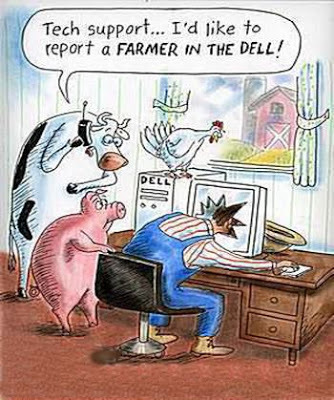
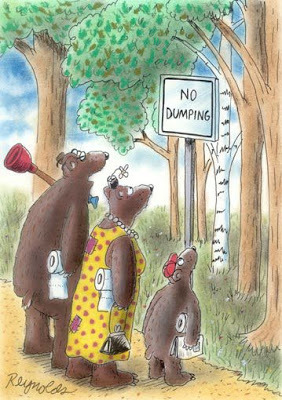
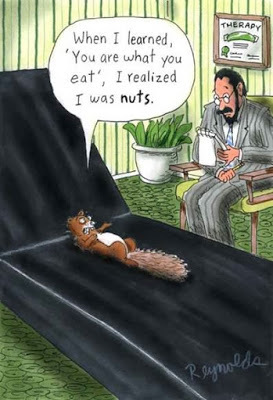
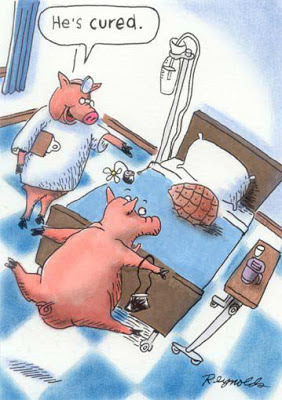
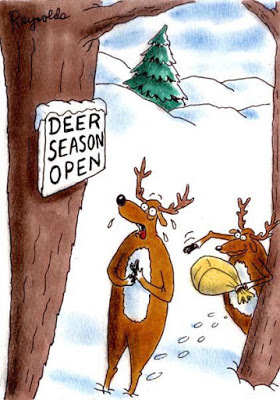
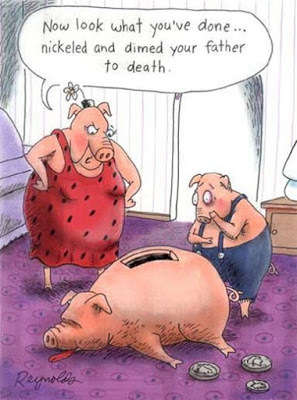



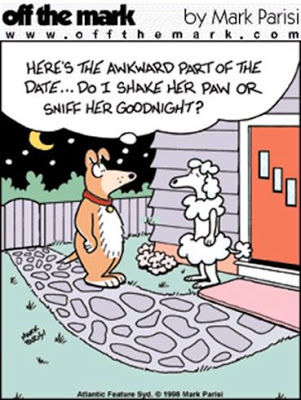







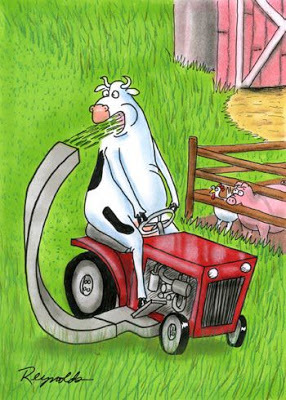

Clancy's comment: Pretty sick, eh?
I'm ...


Published on April 12, 2018 18:23
April 11, 2018
12 April 2018 - THE COURAGEOUS SOPHIE SCHOLL
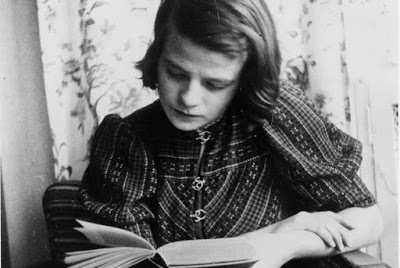
THE COURAGEOUS SOPHIE SCHOLL
G'day folks,
Here is an inspiring story. Sophia Magdalena Scholl was a German student and anti-Nazi political activist, active within the White Rose non-violent resistance group in Nazi Germany.
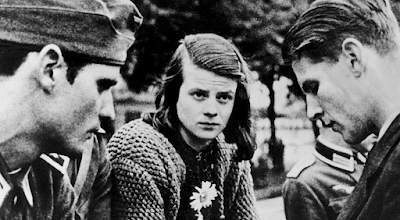
Like most German children in the 1930s, Sophie Scholl and her five siblings joined Nazi youth groups. But Sophie and her brother Hans grew outraged that educated Germans went along with racist Nazi policies.
In 1942, the two siblings, along with their friend Christoph Probst, started a secret society which was known as the “White Rose Resistance.” The trio painted anti-Nazi slogans on the campus of the University of Munich and distributed pamphlets detailing the genocide of Jewish people.
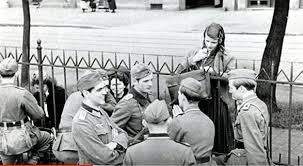
“Since the conquest of Poland, 300,000 Jews have been murdered, a crime against humanity,” read a White Rose Resistance pamphlet.

Scholl’s father, an avowed anti-Nazi who was arrested for criticizing Hitler to a colleague, had raised his children to stand up for what they believed in their hearts. “What I want for you is to live in uprightness and freedom of spirit, no matter how difficult that proves to be.”

His words were prophetic. In October, 1943, Sophie and Hans Scholl, along with Christoph Probst, were sentenced to death by guillotine.

Before she was beheaded at the age of twenty-one, Sophie Scholl said, “Such a fine, sunny day, and I have to go….But what does my death matter…if through us thousands of people… are awakened and stirred to action?”

Clancy's comment: Such courage, but it's a shame more people did not follow her example and speak out. Love ya work, Sophie!
I'm ...


Published on April 11, 2018 15:13
April 10, 2018
11 April 2018 - ANNUAL COW DUNG CAKE BATTLE
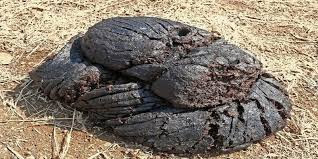
ANNUAL COW DUNG CAKE BATTLE
G'day folks,
I bet you are dying to become involved in this. Every year, the people of Kairuppala, a village in India’s Andhra Pradesh state, engage in an epic cow dung cake battle that often leaves dozens injured. They believe the tradition brings them good health and prosperity.
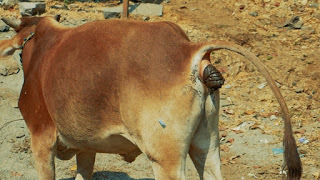
Legend has it that Lord Veerabhadra Swamy, a fearsome form of the Hindu god Shiva, and the Goddess Bhadrakhali fell in love and decided to marry. In order to tease his beloved, Veerabhadra Swamy declared that he did not want to marry anymore, which enraged Bhadrakhali and her clansmen, who decided to teach the deceitful groom a lesson by beating him with cow dung cakes. The other side retaliated, but the goofy battle ended in compromise and the much awaited celestial wedding. Today, the devotees of Kairuppala village celebrate their union by reenacting their mythical battle using the same unconventional weapons.

Mounds of dried cow dung cakes are heaped in the center of the village, and thousands of devotees split into two groups, the Veerabhadra Swamy side and the Bhadrakhali side. As participants arm themselves with cow dung cakes in one hand and towels in the other (for protection), thousands more villagers climb on nearby rooftops and in trees from where they can watch the battle without getting hit with a smelly projectile.
When the signal to start the battle is given, the two sides start flinging pieces of dried cow dung at each other, and keep at it for about a half an hour. They don’t hold back at all, and some combatants do end up with some minor injuries, which are treated with cow dung ash at a village temple. This year, about 50 people were injured in the cow dung cake battle.
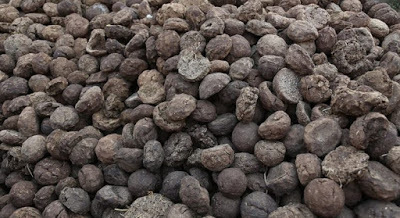
But, just like in the legend that inspired this traditional battle, the ending is always a happy one, with the two sides coming together to celebrate the union of their two deities.

The annual cow dung cake battle of Kairuppala may look like an extreme celebration, but it’s nothing compared to Gotmar Mela, the brutal stone pelting war between the Indian villages of Pandhurna and Sawargaon. This tradition has participants use large rocks instead of cow dung cakes, and leaves hundreds seriously injured or even dead.

Clancy's comment: There ya go. Interested in joining in?
I'm ...

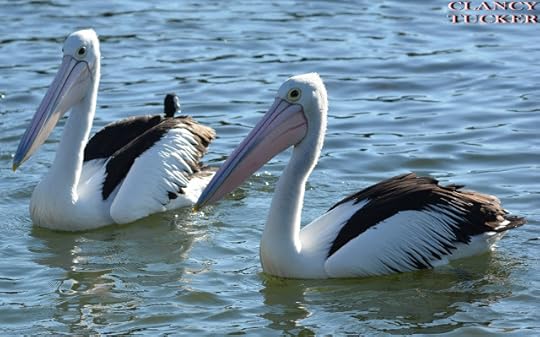
Published on April 10, 2018 14:51
April 9, 2018
10 April 2018 - TOP QUOTES WORTH READING

TOP QUOTES
WORTH READING
G'day folks,
Time for some wise quotes from folks around the world. You might like to pinch some and send them on to others. Why not, eh?














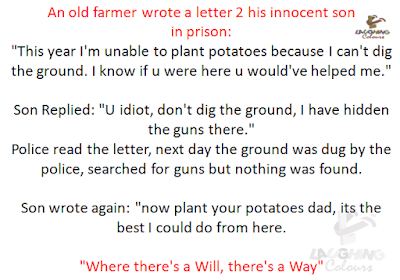

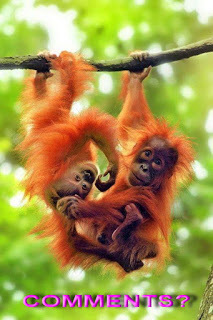
Clancy's comment: Robin Williams - one clever man in more ways than one. RIP.
I'm ....


Published on April 09, 2018 14:54
April 8, 2018
9 April 2018 - THE FLYING SQUIRREL

THE FLYING SQUIRREL
G'day folks,
Welcome to some facts about flying squirrels.
The flying squirrelis a medium-sized rodent, closely related to the squirrelsfound in woodlands and across grasslandsaround the world. Flying squirrelstend to be slightly larger in sizethan the common squirrel.
Despite the name, flying squirrelscannot actually fly, although they can be airborne for a remarkable length of time. Instead of flying, flying squirrelsmove through the air by gliding (normally between the trees), with the longest recorded glide of a flying squirrelbeing nearly 90 meters.
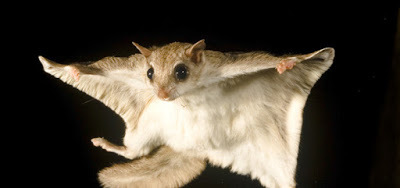
Flying squirrelshave a furry, stretchy membrane that stretches between their front and back legs. When the flying squirrelneeds to get away quickly, it opens its arms and legs out and uses the membrane like a parachute. Flying squirrelsalso have large eyes, and stubby flattened tails.
There are nearly 50 different speciesof flying squirrelfound in forests around the world. Flying squirrelsrange in sizeand colourdepending on the speciesof flying squirrel. The largest speciesof flying squirrelis the Woolly flying squirrel, which is found in Pakistanand the smallest flying squirrelspeciesis the pygmy flying squirrel, found in the jungles of Borneo and Malaysia.

Flying squirrelsare omnivorous animalsmeaning that their dietis based on both plant and animalmatter. The flying squirrelis a nocturnalanimal, so it forages for food under the cover of night as flying squirrelsare not able to easily escape the birdsof preythat hunt during the day. Flying squirrelseat nuts, seeds, fruits, berries, insectsand birdeggs.
Due to their small size, flying squirrelshave numerous natural predatorswherever they live in the world. Domestic cats, raccoons, snakes, birdsof prey, foxes dogsand coyotesare all primary predatorsof the flying squirrel.
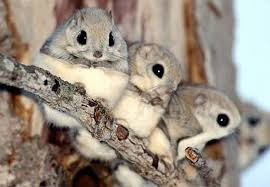
Flying squirrelsare known to breed twice a year, in the early spring and again in the summer. After a gestation period of roughly 40 days, the female flying squirrelgives birth to between 2 and 7 baby flying squirrels, which are blind and naked when they are born. The baby flying squirrelsdevelop fur and open their eyes when they are about a month old. The young flying squirrelsbegin to glide and forage with their mother when they are roughly 2 months old.

Clancy's comment: I often wonder if these cute things inspired the likes of Superman and Batman. Just askin' ...
I'm ...
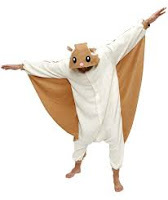
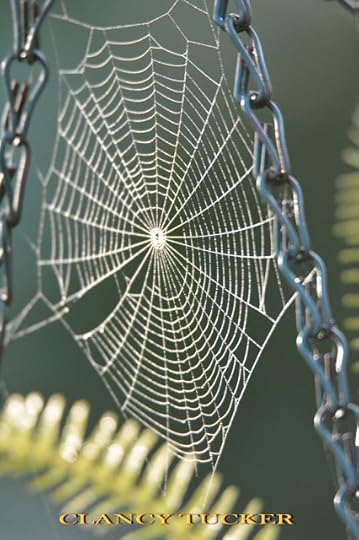
Published on April 08, 2018 15:26
April 7, 2018
8 April 2018 - ANTHONY BARBOZA - PHOTOGRAPHER
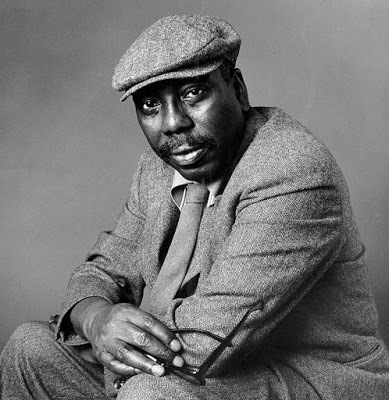
ANTHONY BARBOZA- PHOTOGRAPHER -
G'day folks,
Here is a great story about a photographer who showed up to photography school before he owned a camera; now his work can be seen in galleries, and pioneering photographer Anthony Barboza fought for black artists’ inclusion.
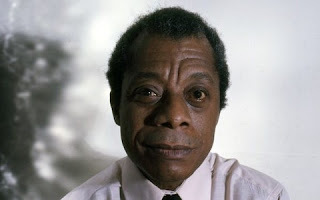
Hedidn’t have a camera yet, but Anthony Barboza was going to become a photographer. The 19-year-old saved up wages from his two jobs and in 1963 made the move from New Bedford, Massachusetts, to New York. He enrolled in a photography school that he’d picked at random from the phone book, but the real education came months later, when his aunt’s friend Adger Cowans took him to a Kamoinge meeting.

Kamoinge (which means “a group of people working together” in the East African Kikuyu language) was a photography collective not yet a year old. The members wanted to create a supportive environment to nurture one another’s artistic growth through discussion and critique, and they wanted to push for the inclusion of black photographers in exhibitions. But beyond personal ambitions, they wanted to create more positive and nuanced visual narratives to counteract stereotypes seen in newspapers and on the screen. Barboza dropped out of school to learn from his newfound mentors. One day he would become the group’s director, but first he needed to buy a camera.

After a three-year stint in the Navy, finding whatever photography work he could, Barboza returned to New York in 1969 and built a portfolio from test sessions he offered to aspiring models. One of those women was Pat Evans, a black model with a freshly shaved head, whom he featured in a national cosmetics campaign for Astarte. The high-profile gig kicked both of their careers into hyperdrive.
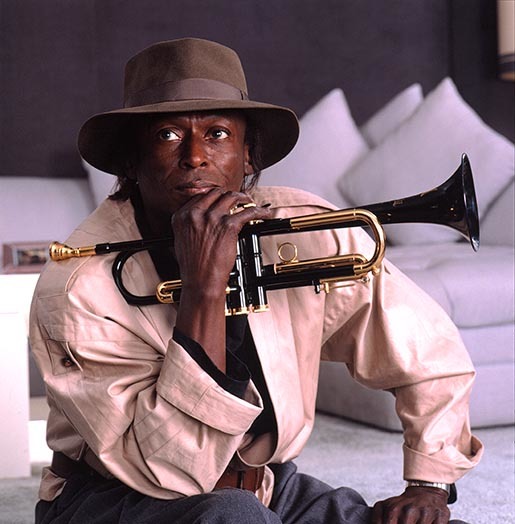
From 1975 until 1980, Barboza worked on an art project that embodied the Kamoinge ideals. Black Borders featured artists, musicians, and writers whom he found personally inspiring — celebrities who would have been out of reach if he hadn’t become a known commercial and editorial photographer.

Unlike his portraits for Essenceor Harper’s Bazaar, Black Borderswasn’t about capturing the essence of the person in front of the lens; it was about capturing the essence of how they and their work made Barboza feel. Seen side by side, the series bleeds from one print to the next, like the melange of sounds, words, and images melded together in his head.

A 1980 NEA grant paid for the publication of a monograph, and MoMA bought a print of Barboza’s photograph of saxophonist Pharoah Sanders. The brash kid who had shown up at photography school before he owned a camera was now a professional, his work seen in magazines and galleries. But he had also used his platform to draw attention to other black artists, and continued to mature and grow as an artist at the same time.

Clancy's comment: Go, Anthony!
I'm ...
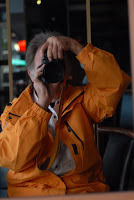

Published on April 07, 2018 17:25
April 6, 2018
7 April 2018 - HOWARD HUGHES AND THE BIGGEST (WOODEN) PLANE IN HISTORY

HOWARD HUGHES AND THE BIGGEST (WOODEN) PLANE IN HISTORY
G'day folks,
This might be very interesting to all you aviation lovers.
Because of wartime rationing on strategic materials such as aluminium, this plane was built almost entirely out of wood. A skeptical press dubbed it “The Spruce Goose.”

Howard Hughes hated the nickname. He felt it was an insult to the prowess of his engineers, and an inaccurate one at that — the plane was made out of birch.

Later named the Hughes H-4 Hercules, the airplane is a prototype strategic airlift flying boat, intended as a transatlantic flight transport for use during World War II. But it was not completed in time to be used in the war, the aircraft made only one brief flight on November 2, 1947, and the project never advanced beyond the single example produced.

The aircraft is now displayed at the Evergreen Aviation & Space Museum in McMinnville, Oregon, United States and remains in good condition.

Clancy's comment: I guess you can do almost anything if you have the money. Imagine the skills required by the wood workers. I'm ....


Published on April 06, 2018 16:01
April 5, 2018
6 April 2018 - WEIRD TREES AROUND THE WORLD
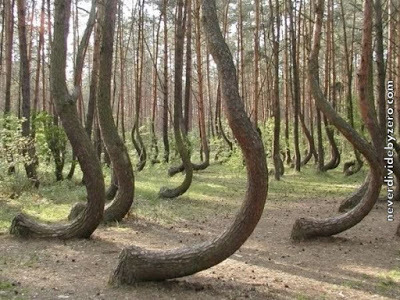
WEIRD TREES AROUND THE WORLD
G'day folks,
Here are some more weird and wonderful trees from around the world. Brace yourself ...
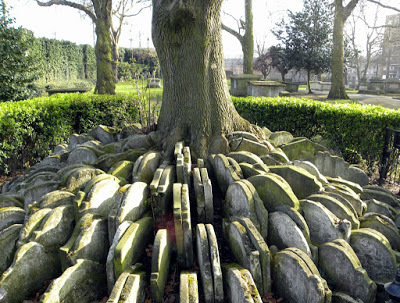




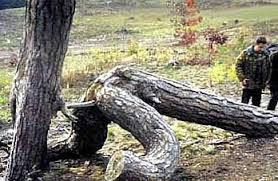


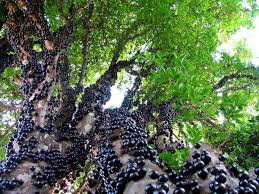
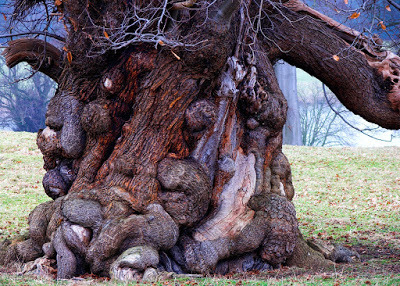





Clancy's comment: Certainly weird and wonderful. Amazing, eh? The arrowed photograph is fruit from the Auld Sage Orange. It is spectacular, and looks like a human brain. A good mate of mine was a wood carver who made some amazing stuff out of this tree.
I'm ...


Published on April 05, 2018 15:41



